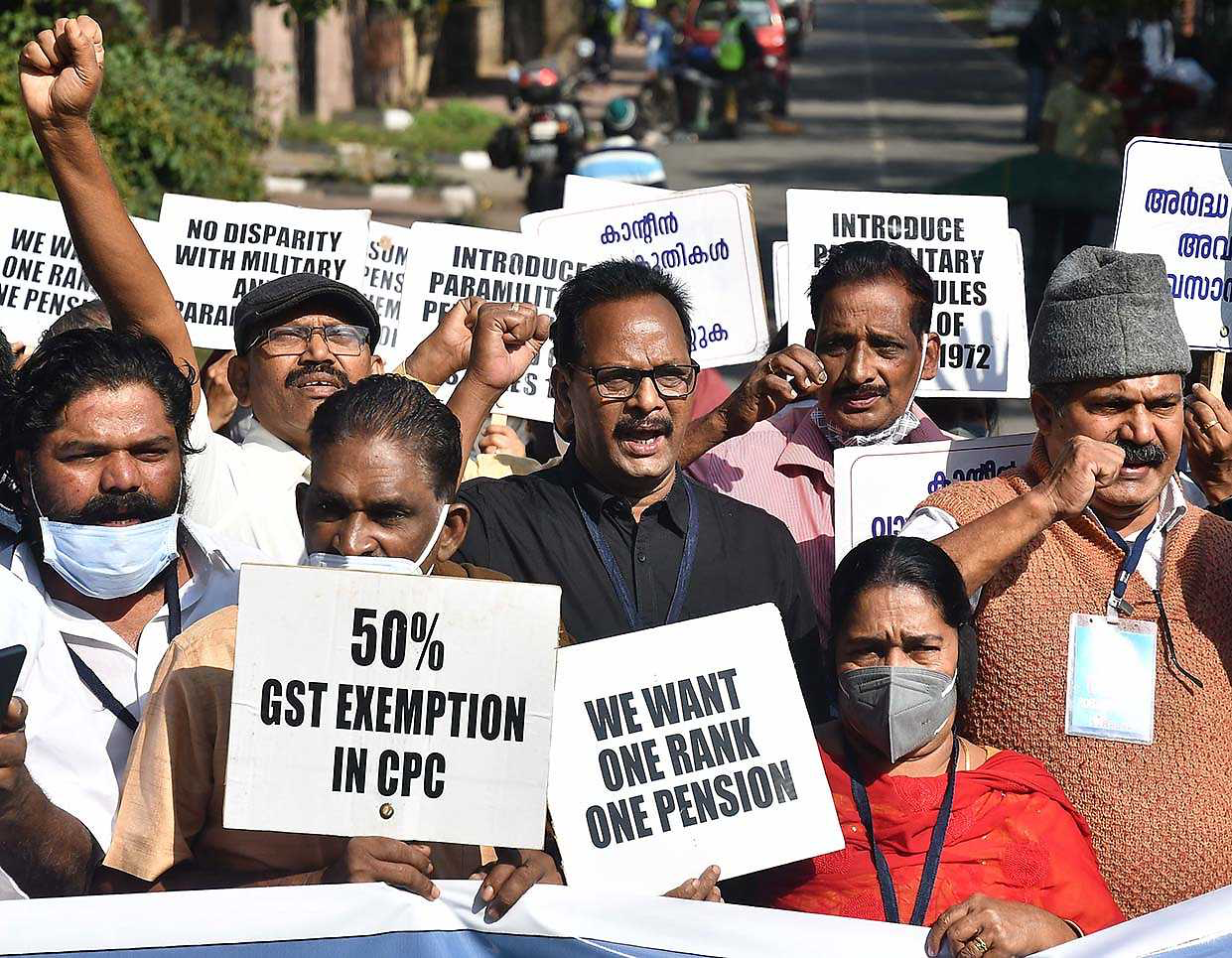ONE RANK ONE PENSION SCHEME

Copyright infringement is not intended
Context: The Union Cabinet approved a pension revision for retirees from the armed forces and their families under the One Rank One Pension (OROP) scheme, which has been delayed since July 2019. Arrears will be paid from July 01, 2019, to June 30, 2022, which is approximately ₹23,638 crore as per the applicable dearness relief, the Defence Ministry said.
Details:
- Pension of the past pensioners would be re-fixed on the basis of average of minimum and maximum pension of defence forces retirees of calendar year 2018 in the same rank with the same length of service
- More than 25.13 lakh people, including over 4.52 lakh new beneficiaries, armed forces pensioners and family pensioners will benefit, it said.
- Armed forces personnel with a retirement date up to June 30, 2019, excluding premature retirees with effect from July 1, 2014, will be covered under this revision.
- Against the backdrop of delays, veterans had taken the legal route to pursue the revision. The case has been repeatedly delayed with the Government asking for more time in the Supreme Court.
- One Rank One Pension implies uniform pension to personnel based on rank and length of service, and irrespective of the date of retirement.
- Pension for those drawing above the average shall be protected and the benefit would also be extended to family pensioners, including war widows and disabled pensioners, the Ministry said.
- Arrears will be paid in four half-yearly instalments. However, all the family pensioners, including those in receipt of special, liberalised family pensions, and gallantry award winners, shall be paid arrears in one instalment.
- The estimated annual expenditure for the implementation of the revision has been calculated as approximately ₹8,450 crore based on 31% Dearness Relief (DR).
- Arrears from July 1, 2019, to December 31, 2021, have been calculated as over ₹19,316 crore based on DR at 17% for the period from July 1, 2019, to June 30, 2021, and at 31% for the period from July 1, 2021, to December 31, 2021. This expenditure is over and above the ongoing expenditure on account of OROP.
About one rank, one pension (OROP):
- One Rank One Pension (OROP), or "same pension, for same rank, for same length of service, irrespective of the date of retirement".
- In 1973, the Government terminated ‘One Rank One Pension’ the basis for deciding pension of Indian Armed Forces Personnel through an administrative order.
- In addition, the Government, on the basis of the report of third Pay commission, from which Armed Forces representation was excluded, and which was dominated by bureaucrats, increased the pension of civilians, who retired at 58, from 30 to 50%, a net increase of 20%; and reduced the pension of soldier, with the caveat that for full pension the minimum service was 33 years.
- Before OROP, ex-servicemen used to get pensions as per the Pay Commission's recommendations of the timewhen they had retired.
- The implementation of the OROP was based on recommendation of the Koshiyari committee,a 10 member all-party parliamentary panel formed under the chairmanship of Bhagat Singh Koshiyari.
- Uttar Pradeshand Punjab have the highest number of OROP beneficiaries.
- Armed Forces Personnel who had retired till 30th June 2014are covered under OROP.
- Under OROP, there would be a review of the pensions every five years.
Arguments in favor of OROP:
- The difference between the pensions of present and past pensioners has grown wide with every pay commission. Veterans argue this is an issue of justice, equity, honor and national security.
- A lower pay status as compared to their civilian counterparts leads to the military personnel having lower morale. This will also affect the serving officers and soldiers.
- Armed forces personnel typically have shorter careers since about 80% of the soldiers compulsorily retire between the ages of 35 and 37. And, about 12% of soldiers retire between 40 and 54 years. This means they retire at far younger ages when compared to the usual 60 years in case of civilians. Therefore, adequate support is required for military personnel to sustain a dignified life.
Arguments against OROP:
- The implementation of this scheme will increase annual financial burden between 8,000 to 10,000 crore.
- Some argue that the comparison with civilians is not correct as the armed forces receive many other allowances that are not given to civilians. They get dedicated army schools, colleges, hospitals, subsidized food and beverages, quotas for children in universities and schools, etc. the equivalents of which are not accorded to civilians anywhere.
- Similar demands can also be made by the other paramilitary forces like the CAPF, Assam Rifles, SSB, etc. The police forces have also started making similar demands as even their conditions of service are often tough.
- The implementation of this scheme can also be an administrative challenge due to the lack of records going back decades.
https://epaper.thehindu.com/Home/ShareArticle?OrgId=GK3AM06RK.1&imageview=0



.jpg)

1.png)
